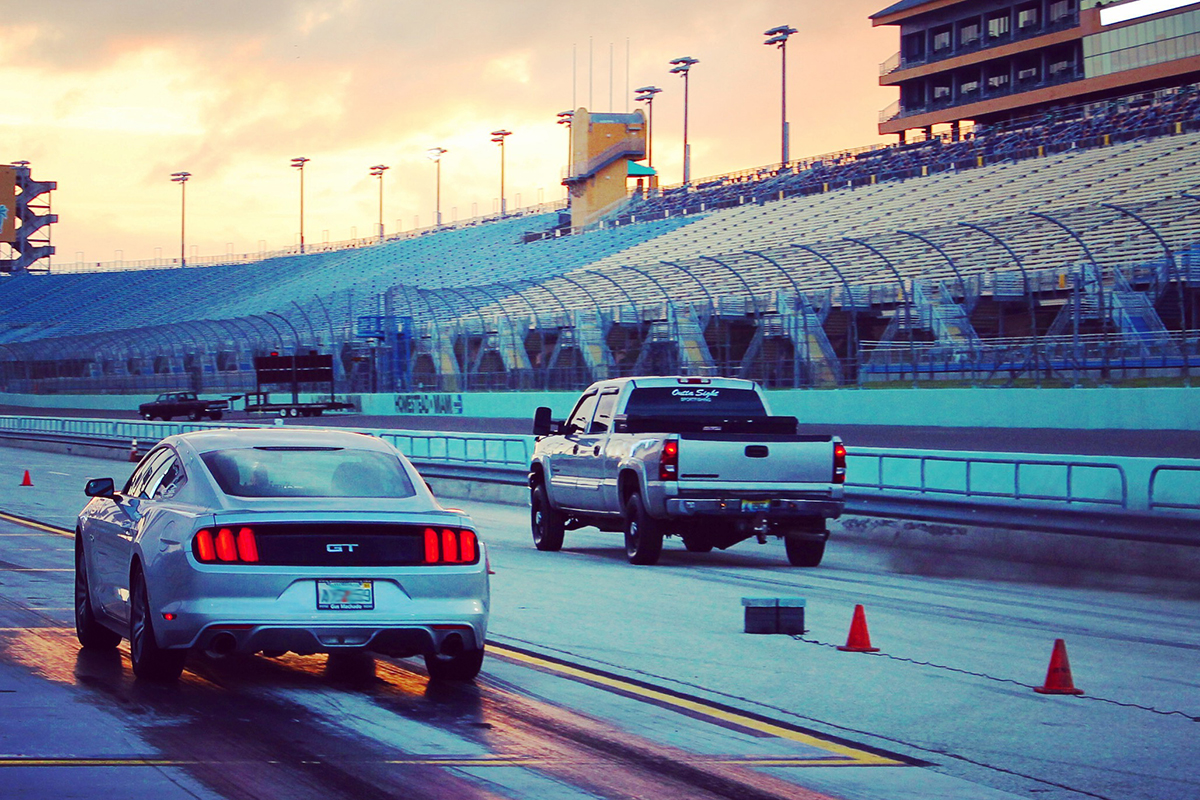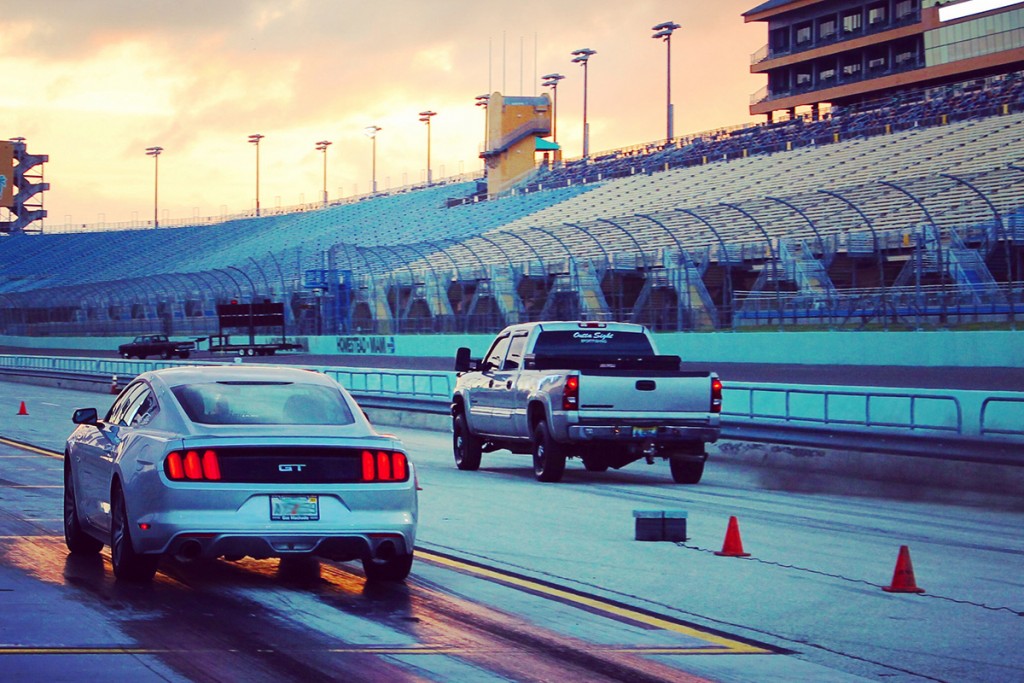

Twenty-year-old mechanic Dominic Abreu has loved cars since he was a little boy, influenced by his father’s background as a mechanic and recreational racer. The two Chevy lovers describe themselves as Muscle guys to the bone, and they have been working on their 1992 Camaro and 1984 Corvette to experience the new age of drag racing in South Florida, which roars to life one Friday a month at the Miami-Homestead Speedway.
Abreu is a regular at Miami-Homestead Speedway’s Fast Lane Fridays, a monthly, six-hour long event where drivers of all backgrounds can legally drag race their own cars on a an eighth of a mile drag strip for $20. The young racer brought his father for the first time in September to introduce a different racing experience, as Fast Lane Friday events are a convergence of diverse people and even more diverse automobiles.
The event brings hundreds of racers and spectators every month to experience the thrill of drag racing on the same track as NASCAR champions. After a car safety inspection and license check, racers choose an opponent and drive up to the start line. The crowd watches from the other side of a metal fence as the sound of engines warming up fills the hot and humid South Florida air. As the flickering signal lights change from yellow to green to red, drivers take off, leaving behind a trail of smoke and the smell of burning rubber against asphalt.
“The auto-industry is a lifestyle, and when you come here, you look at what other people have and it doesn’t matter what you like; if you’re a Chevy guy you like Muscle, others like Japanese cars, others like trucks, but we respect them all,” Abreu said.
Cheering spectators fill the stands, shouting for family, friends and even racers they don’t know. The mixture of fans ranges from three-year-old toddlers running around the stands to 80-year-old all-American car-enthusiasts.
“We’re out here supporting Fast Lane Friday and our car crew, Society’s Finest,” said Anelys Ruiz, who attended with her group, that regularly shows up at the event to race. She is anxiously waiting to get her license to start racing herself. “It’s a perfect family get-together, and we come out here for the noise because we love loud cars. It’s really touching to see that everyone’s all together and how friendly everyone is.”
Kat Abreu is another racing fanatic who goes to Fast Lane Fridays regularly to watch her racing friends. She says drag racing is a unique and fulfilling activity.
“We come here every Friday,” Abreu said of her friends. “It’s a very wholesome activity and it’s also more of a fun, get-down-dirty activity to do with the family. You go to Knaus Berry Farm, you go to all these nice little farm places and it’s cute, but this is fun and rough.”
Like their audience, racers have different reasons for spending their Friday nights making their wheels screech around a track. While the adrenaline rush is a common factor, newcomers and veterans of drag racing have different reasons for coming out.
First-time racer Steven Cornejo was inspired by friends to try the activity, and took his black 2012 Impala, the car he drives daily to work, to the track to see how fast it could go.
“The first time I came here, I was a spectator, and now I actually get to come and race myself,” Cornejo said. “The feeling that you get, the power that you get behind a machine that you control it’s just something that most people just ignore on a daily basis.”
Regular competitor Peter Batalas, proud owner of a charcoal gray sleek 1992 Skyline GT-R, developed a love for cars after watching his first auto-show at eight years of age. To Batalas, racing is about proving himself to spectators and transmitting his passion for a well-oiled machine.
“It’s a big adrenaline rush; you basically come here to show how fast your car is and to prove to other people that you’re a good driver,” Batalas said. “Most people that come here are adrenaline junkies, people that love a lot of horse power and fast cars.”





